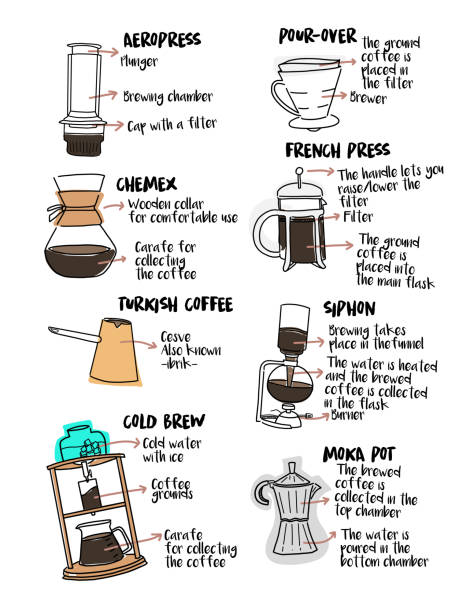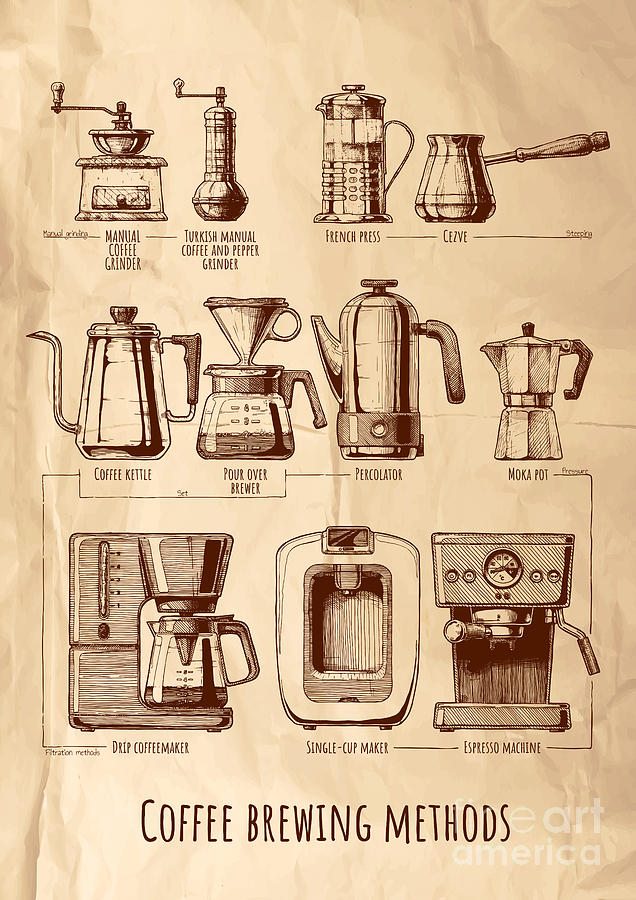A Comprehensive Guide to Numerous Coffee Brewing Methods You Must Try
A Comprehensive Guide to Numerous Coffee Brewing Methods You Must Try
Blog Article
The Science Behind Coffee Developing: Exactly How Temperature and Time Affect Your Beverage
Understanding the science behind coffee developing exposes that temperature and time are not mere variables however crucial elements that determine the drink's taste account and total top quality. As we explore the nuances of these elements, the inquiry develops: exactly how can one effectively balance temperature level and time to accomplish that ideal brew?
The Chemistry of Coffee Extraction
The chemistry of coffee removal looks into the intricate procedures that transform raw coffee beans right into the fragrant drink appreciated worldwide. This transformation largely entails the solubility of various substances present in the beans, which are influenced by variables such as work size, water high quality, and the brewing method employed.
During the developing procedure, warm water functions as a solvent, extracting soluble compounds, consisting of high levels of caffeine, acids, lipids, and sugars, from the coffee premises. Each compound adds to the taste profile, fragrance, and body of the final drink. Acids are accountable for brilliant and zesty notes, while oils add to a rich mouthfeel.
The removal process is not uniform; different compounds liquify at different prices. The first stages of developing essence acids and sugars, bring about a pleasurable level of acidity, while extended removal can bring about bitterness because of over-extraction of undesirable compounds. Understanding these chemical interactions is important for maximizing brewing methods, as the balance between extraction time and water temperature level can significantly affect the general quality of the coffee. Inevitably, understanding the chemistry of coffee extraction is key to achieving a savory and well-shaped cup.
Perfect Developing Temperatures
Discovering the ideal brewing temperature is necessary for opening the full potential of coffee flavors and fragrances - coffee brewing methods. Study suggests that the ideal range for developing coffee exists in between 195 ° F to 205 ° F(90 ° C to 96 ° C) Within this variety, the extraction procedure properly liquifies the desirable soluble substances in coffee beans, leading to a well balanced and delicious cup
Developing at reduced temperature levels, such as below 195 ° F(90 ° C ), may cause under-extraction, producing an acidic and weak mixture with muted tastes. Conversely, brewing at temperatures exceeding 205 ° F(96 ° C) can result in over-extraction, generating a severe and bitter taste due to the extreme dissolution of unfavorable substances, such as tannins.
Additionally, the excellent brewing temperature level can differ relying on the coffee bean kind and roast level. As an example, lighter roasts typically take advantage of a little higher temperatures to boost their complicated taste profiles, while darker roasts may be better fit to reduced temperature levels to minimize anger.
Ultimately, keeping accuracy in brewing temperature levels is crucial for attaining a harmonious equilibrium of tastes, guaranteeing that every cup of coffee provides a satisfying sensory experience.
Impact of Brewing Time
Developing time plays a pivotal function in determining the flavor account and overall high quality of coffee. The extraction procedure, which influences the taste, fragrance, and body of the drink, is mainly reliant on how much time the coffee grounds are in call with water. Shorter brewing times can result in under-extraction, resulting in a sour or weak taste, as not nearly enough soluble substances are liquified. Conversely, prolonged brewing can bring about over-extraction, where unfavorable substances are launched, leading to an astringent or bitter preference.
Optimum brewing time differs depending on the method made use of and the grind size of the coffee. For example, a French press typically needs regarding 4 minutes, while espresso extraction is usually completed within 25 to 30 secs. It is vital to calibrate brewing time in conjunction with various other variables, such as water temperature and coffee-to-water ratio, to accomplish the wanted taste account.
Recognizing the impact of developing time makes it possible for coffee enthusiasts to improve their brewing techniques, eventually boosting the sensory experience of their mug (coffee brewing methods). With cautious focus to this variable, one can unlock the complete possibility of the coffee, disclosing its unique attributes and nuances
Brewing Approaches and Their Effects

As an example, techniques like French press and chilly mixture enable a much longer steeping time, resulting in a fuller body and robust taste because of increased removal of oils and soluble solids. Alternatively, espresso developing uses high stress and weblink a shorter removal time, producing a concentrated shot that emphasizes intense flavors and a rich crema.
Pour-over strategies, such as Chemex or V60, supply an even more regulated removal procedure, allowing the maker to manipulate circulation rate and water distribution, which can enhance original site illumination and quality. At the same time, percolation methods cycle water with the coffee grounds multiple times, leading to a more powerful, usually bitter flavor.
Last but not least, using paper filters versus metal filters can additionally impact the final preference; paper filters usually produce a cleaner mug by capturing oils and great fragments, while steel filters enable more oils to go through, adding to a fuller mouthfeel - coffee brewing methods. Comprehending these nuances can raise the coffee experience substantially
Tips for Improving Your Mixture
A well-executed brew can change also the easiest coffee into an exceptional experience. To achieve this, interest to detail is important. Start with high-grade, fresh baked beans, as their taste profile decreases with time. Grind the beans just before making to make best use of freshness, guaranteeing the grind dimension matches your brewing approach-- coarser for French press and finer for espresso.
Water quality plays an important duty; usage filteringed system water totally free from pollutants. The optimal developing temperature ranges in between 195 ° F and 205 ° F(90 ° C to 96 ° C ) As well hot can blister the coffee, while also great may under-extract tastes.
Timing is equally important. For immersion methods, soaking for 3 to 5 minutes is ideal, whereas drip approaches normally take about 5 minutes. Try out mixture times to find your preferred toughness.

Verdict
In next recap, the detailed relationship in between temperature level and time is extremely important in the coffee developing procedure. Comprehending these clinical principles encourages people to refine their developing strategies, ultimately leading to an extra well balanced and delightful coffee experience.
Comprehending the science behind coffee brewing reveals that temperature and time are not plain variables however critical components that determine the drink's taste profile and overall quality. Recognizing these chemical communications is vital for optimizing brewing strategies, as the equilibrium in between extraction time and water temperature can significantly affect the general high quality of the coffee.Developing time plays an essential function in figuring out the flavor account and general high quality of coffee. By focusing on these elements-- bean high quality, grind dimension, water temperature, steeping time, and ratio-- you can raise your coffee brewing procedure, resulting in a continually premium cup.
In summary, the detailed partnership in between temperature level and time is critical in the coffee developing process.
Report this page